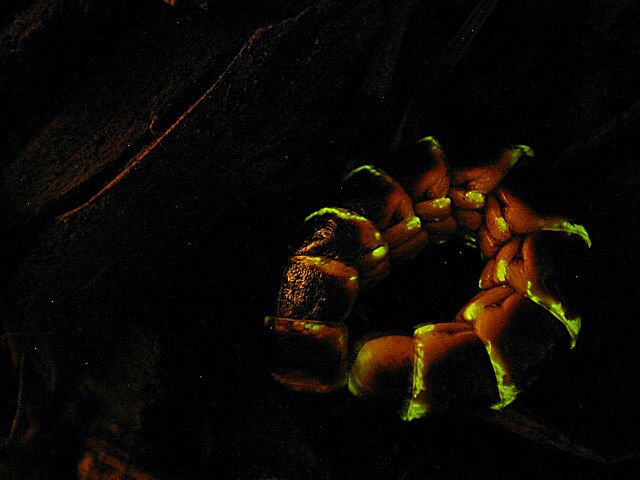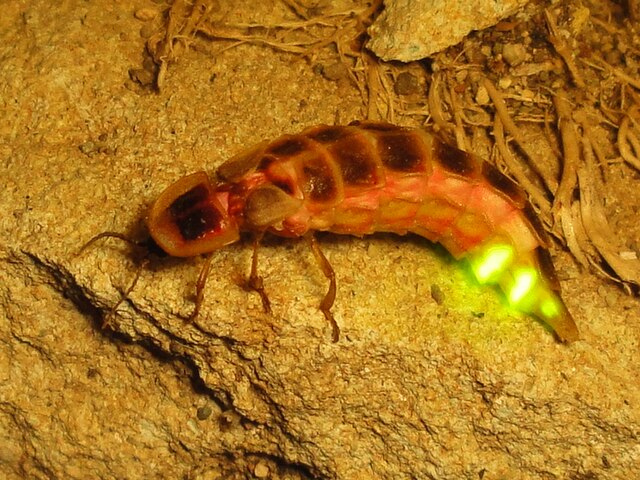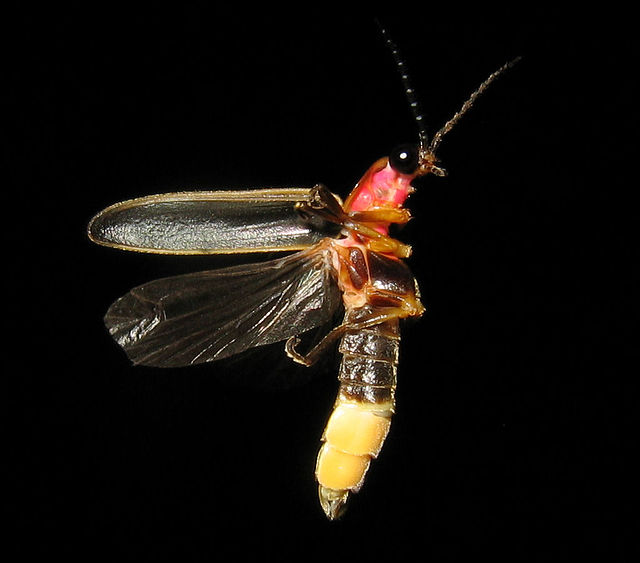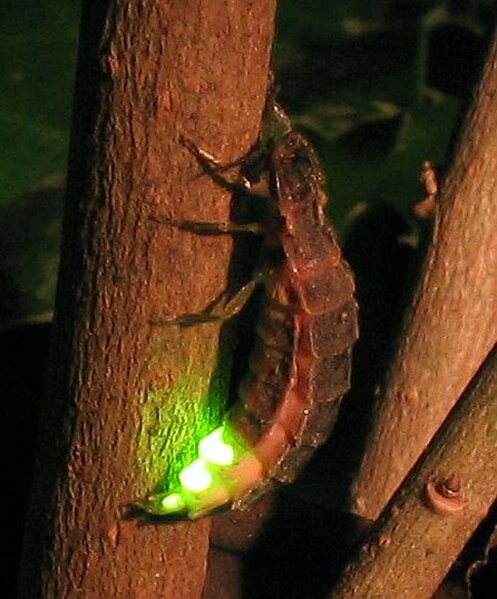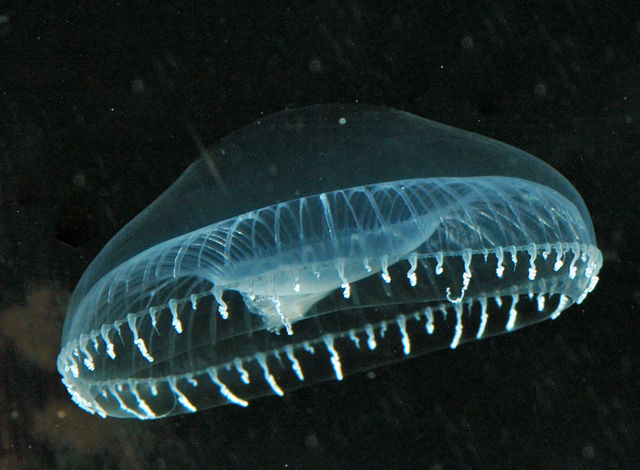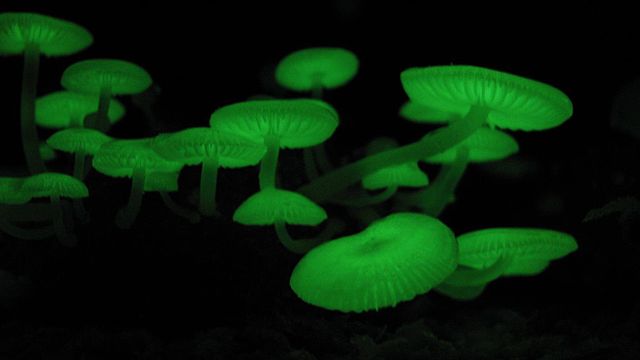Glowworm or glow-worm is the common name for various groups of insect larvae and adult larviform females that glow through bioluminescence. They include the European common glow-worm and other members of the Lampyridae, but bioluminescence also occurs in the families Elateridae, Phengodidae and Rhagophthalmidae among beetles; as well as members of the genera Arachnocampa, Keroplatus and Orfelia among keroplatid fungus gnats.
Phengodidae: Larva or larviform female of the western banded glowworm (Zarhipis integripennis)
Lampyridae: Female common glowworm (Lampyris noctiluca) from Assos, Turkey
Lampyridae: Male common eastern firefly (Photinus pyralis) from Evansville, United States
Elateridae: Male headlight click beetle (Pyrophorus noctilucus) from Jamaica
Bioluminescence is the production and emission of light by living organisms. It is a form of chemiluminescence. Bioluminescence occurs widely in marine vertebrates and invertebrates, as well as in some fungi, microorganisms including some bioluminescent bacteria, and terrestrial arthropods such as fireflies. In some animals, the light is bacteriogenic, produced by symbiotic bacteria such as those from the genus Vibrio; in others, it is autogenic, produced by the animals themselves.
Flying and glowing firefly, Photinus pyralis
Female glowworm, Lampyris noctiluca
Osamu Shimomura isolated the photoprotein aequorin and its cofactor coelenterazine from the crystal jelly Aequorea victoria in 1961.
Mycena chlorophos, a bioluminescent mushroom

